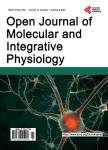Direction without speed information process in the human brain: a magnetoencephalographic study using random dots apparent motion stimulus
Direction without speed information process in the human brain: a magnetoencephalographic study using random dots apparent motion stimulus作者机构:Department of Integrative Physiology National Institute for Physiological Sciences Myodaiji-cho Okazaki Japan
出 版 物:《Open Journal of Molecular and Integrative Physiology》 (分子和综合生理学期刊(英文))
年 卷 期:2011年第1卷第2期
页 面:17-22页
学科分类:1002[医学-临床医学] 100214[医学-肿瘤学] 10[医学]
主 题:Apparent Motion Random Dot Kinematogram Direction Information Entropy Magnetoencephalography
摘 要:Apparent motion stimulus induces visual perception of smooth motion even though there is no speed information. We examined whether human brain response as measured by magnetoencephalography carries direction information in the visually presented apparent motion of a randomdot pattern in a similar manner as continuous motions that have speed and direction information. Although there was no significant effect of motion direction on the peak response latency and amplitude, mutual information entropy (IE) significantly increased after the motion onset at approximately 36 ms after the response latency in 41% of the evaluations. Detailed analysis of the data from five subjects who participated in both the present apparent motion and our previous coherent motion studies revealed that the maximum IE latency (delay) for apparent motion was significantly longer than that for coherent motion, although the mean maximum IE was the same. The results indicate that direction is represented in the response waveform evoked by apparent motion but the manner is different from that for coherent motion probably due to the distinct neural processes engaged only for the apparent motion perception. We consider that direction and speed can be processed separately in the human brain because direction information was generated without speed information for the perception of apparent motion.



